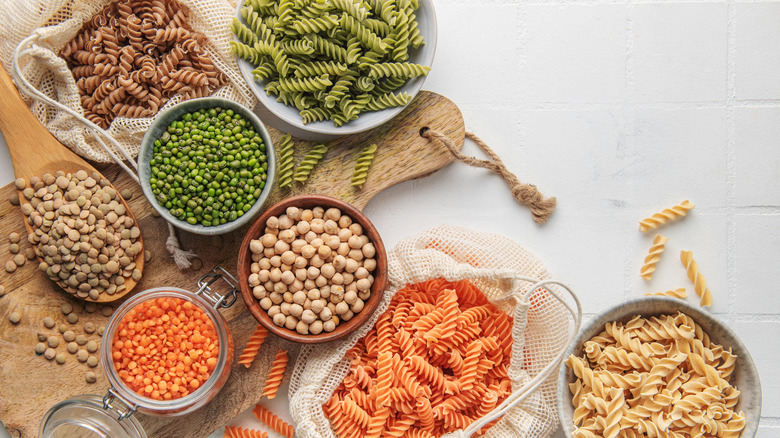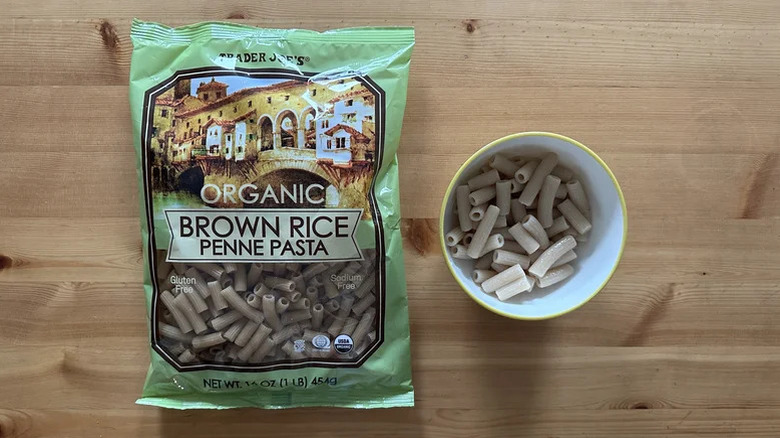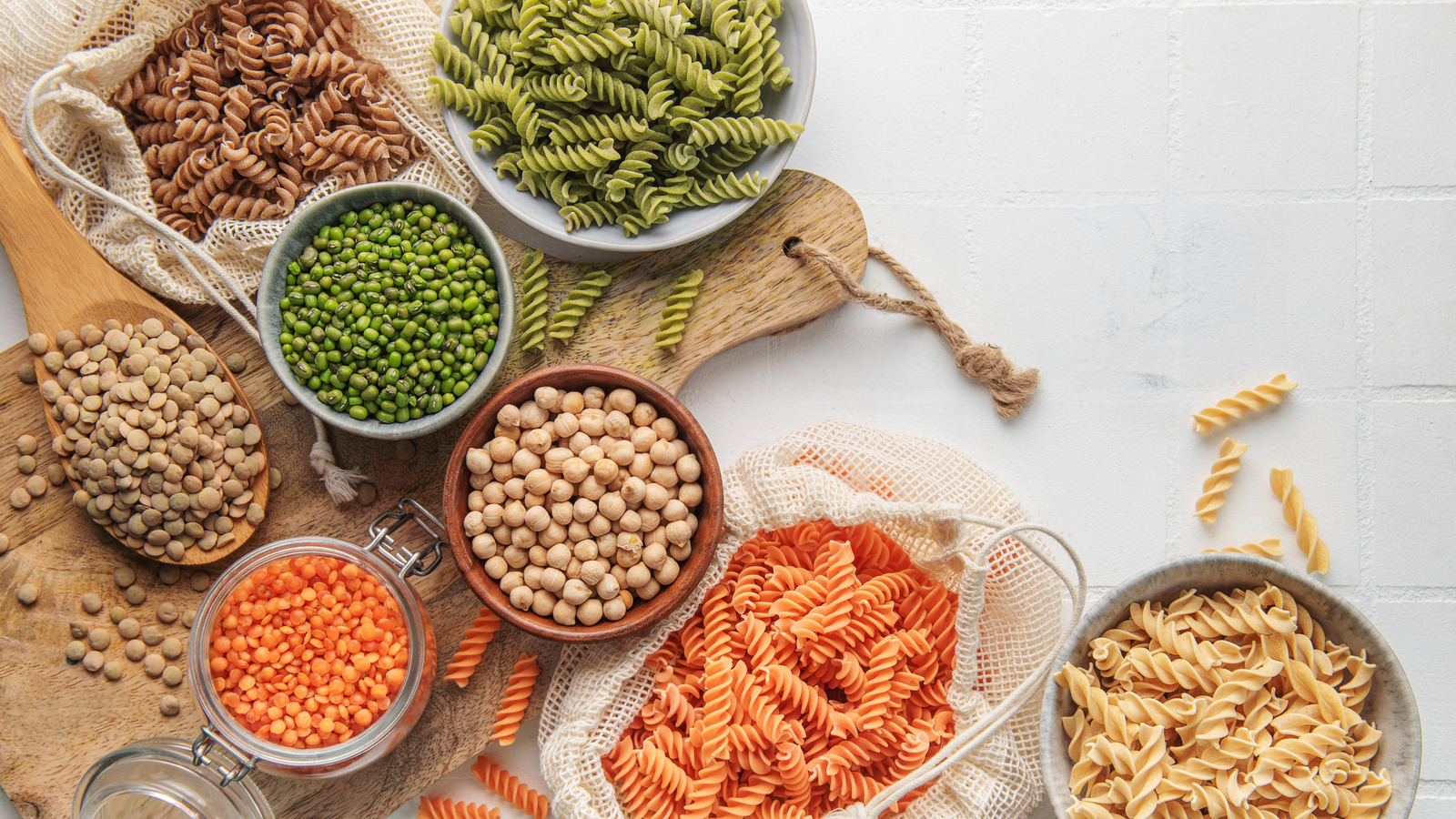
Almaje/Getty Images
We may receive a commission on purchases made from links.
Trader Joe’s is wildly popular for unique and affordable products presented under the Trader Joe’s store-brand name. A hip grocery store by anyone’s standard, TJ’s caters to all tastes and dietary restrictions. In fact, the grocery store chain even accommodates gluten-free diets with a wide range of gluten-free pastas. With that in mind, we ranked 7 gluten-free Trader Joe’s pastas according to taste, texture, and likeness to their wheat pasta counterparts. While we found plenty of great options, the organic brown rice penne pasta should be avoided at all costs.
Penne is a versatile type of pasta that works well with hearty sauces like Bolognese and traps thick, creamy white sauces like Alfredo. So, we’ll give the brown rice penne points for versatility — and it cooks quickly, too. However, the flavor is a much more important criterion that earned this Trader Joe’s pasta a last-place ranking. Brown rice may taste nutty and earthy when cooked as separate grains, but this brown rice pasta had an earthiness far more reminiscent of dirt. Worst of all, it offered a notably bitter taste that no type of pasta sauce would be able to mask. Suffice it to say, Trader Joe’s brown rice penne fails to mimic the subtle savoriness of conventional wheat pasta.
Negative reviews from gluten-free customers

Samantha Maxwell/Tasting Table
Aside from our review, Trader Joe’s organic gluten-free penne pasta received less than favorable reviews from customers who complained mainly about the texture of the pasta. One Amazon reviewer noted that, “Even after a cold rinse, [the pasta was] a sticky, gluey mess.” Brown rice may be a gluten-free and healthy complex carbohydrate, but it might not be the best wheat flour substitute out there. Brown rice releases an excess of starch as it cooks, resulting in an enjoyably soft and sticky texture. It’s also easier to overcook than other gluten-free starches, becoming mushy in addition to sticky and gummy. To that effect, one Influenster reviewer wrote that, “From the moment I put this in the pot, I noticed an exorbitant amount of starch. I’ve had other brown rice pastas before, and this is by far the worst.”
Another textural issue often brought up in negative reviews is a grittiness, a byproduct of the coarseness of a whole grain like brown rice and even whole wheat. Chickpea flour and corn flour are among the best wheat flour alternatives for gluten-free pasta. Even a combination of corn flour and another grain will result in a color and texture that mimics conventional pasta. For example, our favorite Trader Joe’s pasta, gluten-free tagliatelle, is made with a combination of corn and brown rice flour. Swap the brown rice penne for the gluten-free tagliatelle, but switch the type of sauce you use; a lighter sauce pairs best with thinner, longer tagliatelle.
